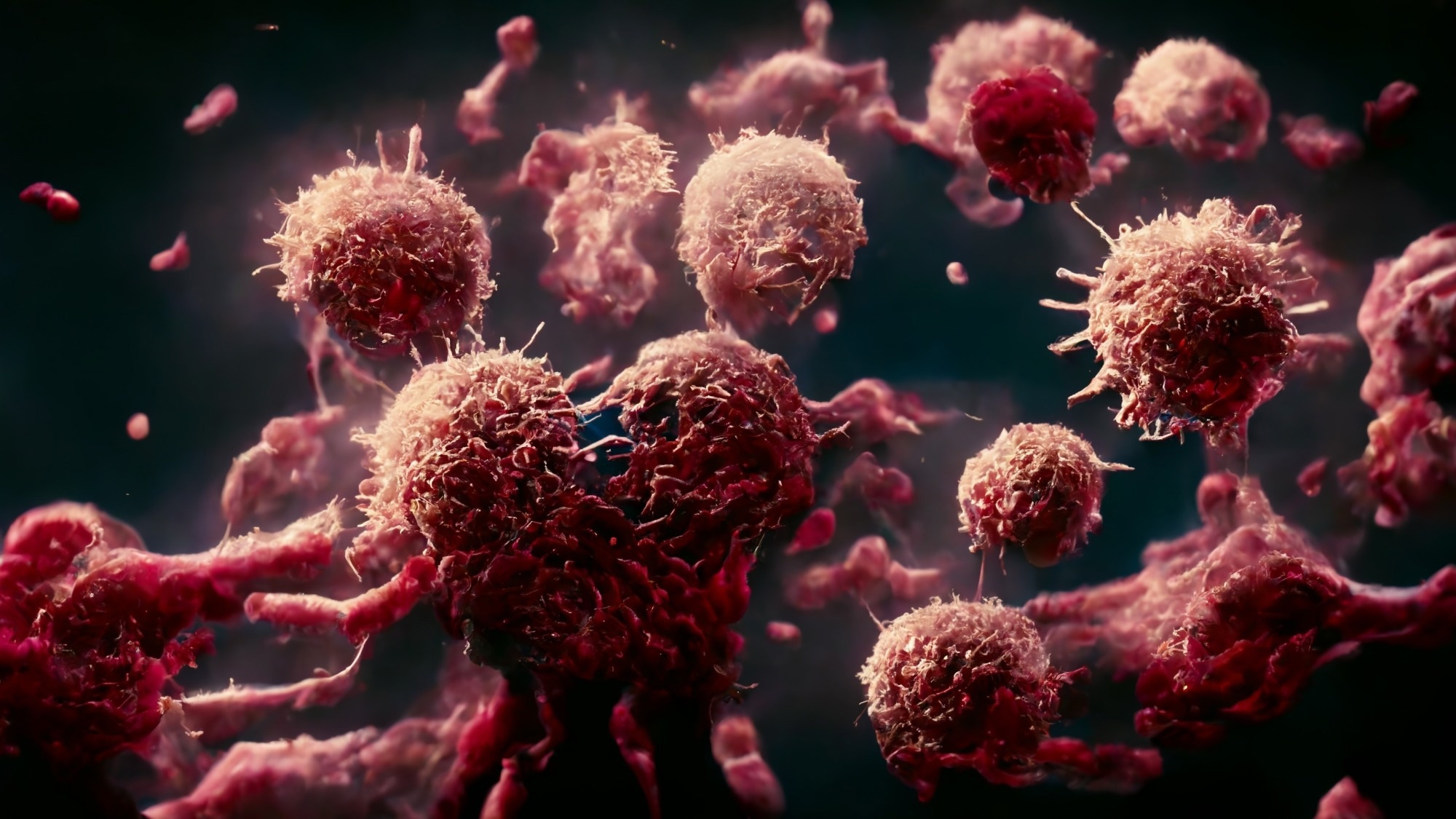A month of Urolithin A supplementation restored youthful energy metabolism in immune cells, hinting at a safe nutritional strategy to counter immune aging and improve resilience to infections.
Study: Effect of the mitophagy inducer urolithin A on age-related immune decline: a randomized, placebo-controlled trial. Image Credit: CI Photos / Shutterstock
In a recent study published in Nature Aging, researchers evaluated whether oral Urolithin A (UA), a mitophagy-inducing postbiotic, can remodel immune cell phenotypes and metabolism in healthy middle-aged adults compared with placebo.
How Aging Impacts Immunity and Mitochondrial Function
By age 50, many people notice slower recovery, weaker vaccine responses, and lingering infections, signs of immune aging. This process involves a decline in naïve T cells and persistent low-grade inflammation (“inflammaging”).
Mitochondria, the body’s primary energy generators, and mitophagy, their quality control process, play key roles in maintaining immune balance. When mitophagy falters, immune cells lean toward exhaustion and inflammation. Scientists have hypothesized that safe, food-derived molecules that improve mitochondrial quality could strengthen immunity and enhance vaccine effectiveness, but targeted interventions require further study.
Randomized Trial Design and Participant Overview
The trial was randomized, double-blind, and placebo-controlled, enrolling 50 healthy adults aged 45–70 years. Participants received either 1,000 mg of oral UA daily or placebo for 28 days. Assessments occurred at baseline, day 7, and day 28.
Primary outcomes included changes in CD3⁺ T-cell subsets and immune metabolic remodeling. Secondary endpoints assessed included cytokine levels (IL-6, TNF, IL-1β, IL-10, and IL-2), immune population shifts, mitochondrial measures, and functional assays. PBMCs were analyzed using spectral flow cytometry.
Measuring Cellular Energy and Mitochondrial Activity
Single-cell energetic metabolism profiling (SCENITH) evaluated energy pathway use under translational blockade, assessing oxidative phosphorylation (OXPHOS), fatty acid oxidation (FAO), and amino acid oxidation (AAO).
Mitochondrial content and activity were measured via MitoTracker dyes and PGC-1α, a key regulator of mitochondrial biogenesis. Safety labs and adverse events were tracked throughout, in accordance with CONSORT guidelines, with Institutional Review Board approval.
Urolithin A Reprograms CD8⁺ T-Cell Function
UA supplementation reshaped the CD8⁺ T-cell profile toward a “ready-to-respond” state. Compared with placebo, UA increased naïve-like CD8⁺ T cells and Ki-67 expression (linked to proliferation and reinvigoration) while reducing TOX, a transcription factor associated with exhaustion. PD-1 expression was unchanged, and CD4⁺ subsets remained stable, indicating selective CD8⁺ rejuvenation without global activation.
Quantitatively, UA increased naïve-like CD8⁺ cells by 0.50 percentage points (95% CI 0.16–0.83; P = 0.0437) and boosted FAO/AAO capacity by 14.72 percentage points (95% CI 6.46–22.99; P = 0.0061).
Enhanced Metabolic Efficiency and Energy Flexibility
SCENITH analysis revealed that UA reduced glucose dependence and enhanced fatty acid and amino acid oxidation in CD8⁺ T cells, particularly in naïve cells, thereby favoring a durable, oxidative energy profile. NK cells displayed similar metabolic gains, while monocytes stayed glycolytic and CD4⁺ T cells were largely unchanged.
These changes indicate improved mitochondrial efficiency, characteristic of youthful immune energy management and sustained cellular readiness.
Broader Immune Remodeling Beyond T Cells
UA’s effects extended to other immune compartments. Circulating CD56dim CD16bright NK cells and nonclassical monocytes (CD14lo CD16hi) increased, whereas classical monocytes showed fewer HLA-DRhi cells, suggesting reduced inflammatory priming. B-cell and dendritic-cell totals remained stable.
In CD8⁺ T cells, PGC-1α expression rose, indicating mitochondrial biogenesis balanced by ongoing mitophagy. Despite these shifts, senescence markers (p16, p21, KLRG1, CD57) remained unchanged, suggesting rejuvenation without reversal of senescence.
Systemic and Cytokine-Level Immune Effects
At the systemic level, plasma IL-2 decreased without unwanted increases in pro-inflammatory cytokines. Upon ex vivo stimulation, UA-treated CD8⁺ T cells produced more TNF but not IL-4, signifying a stronger type-1 immune response without type-2 skewing.
Monocytes from UA recipients demonstrated greater phagocytosis of E. coli, suggesting improved bacterial clearance potential. Cytokine analyses involved approximately 15–20 matched samples per cytokine and were exploratory in scope.
Transcriptomic Insights from Single-Cell RNA Sequencing
Single-cell RNA sequencing (scRNA-seq) revealed that UA upregulated TCF7, LEF1, and IL7R (genes linked to T-cell stemness and memory) while downregulating exhaustion-associated genes NR4A2 and CREM.
Pathway analyses revealed the activation of TCR signaling and the suppression of GPCR–Gαs–PKA inhibitory checkpoints, consistent with enhanced T-cell motility and responsiveness. Across NK cells, monocytes, and B cells, UA reduced inflammatory transcriptional programs and upregulated cytoskeletal and adhesion pathways.
Monocytes also increased NAMPT expression, part of the NAD salvage pathway associated with anti-inflammatory states. These exploratory transcriptomic findings (from five post-randomization participants) warrant cautious interpretation.
Safety, Tolerability, and Study Limitations
UA was bioavailable and well-tolerated, with adverse events comparable to those of the placebo over 28 days. While the study detected cellular and molecular rejuvenation signatures, it was limited by small sample size, short duration, and absence of infection or vaccine-response outcomes.
Conclusions: Urolithin A as a Potential Immune Rejuvenator
In healthy middle-aged adults, a 28-day UA regimen shifted CD8⁺ T cells toward a youthful, less exhausted phenotype, reprogrammed metabolism toward mitochondrial oxidation, expanded beneficial NK subsets, and enhanced monocyte bacterial clearance.
These molecular and metabolic improvements suggest better mitochondrial quality control and reduced inhibitory signaling, potentially translating to stronger immune defenses with age. Larger, longer trials are necessary to assess clinical benefits, optimize dosing, and evaluate synergy with vaccines or immunotherapies.
Journal reference:
- Denk, D., Singh, A., Kasler, H. G., D’Amico, D., Rey, J., Alcober-Boquet, L., Gorol, J. M., Steup, C., Tiwari, R., Kwok, R., Argüello, R. J., Faitg, J., Sprinzl, K., Zeuzem, S., Nekljudova, V., Loibl, S., Verdin, E., Rinsch, C., & Greten, F. R. (2025). Effect of the mitophagy inducer urolithin A on age-related immune decline: a randomized, placebo-controlled trial. Nature Aging. DOI: 10.1038/s43587-025-00996-x https://www.nature.com/articles/s43587-025-00996-x
